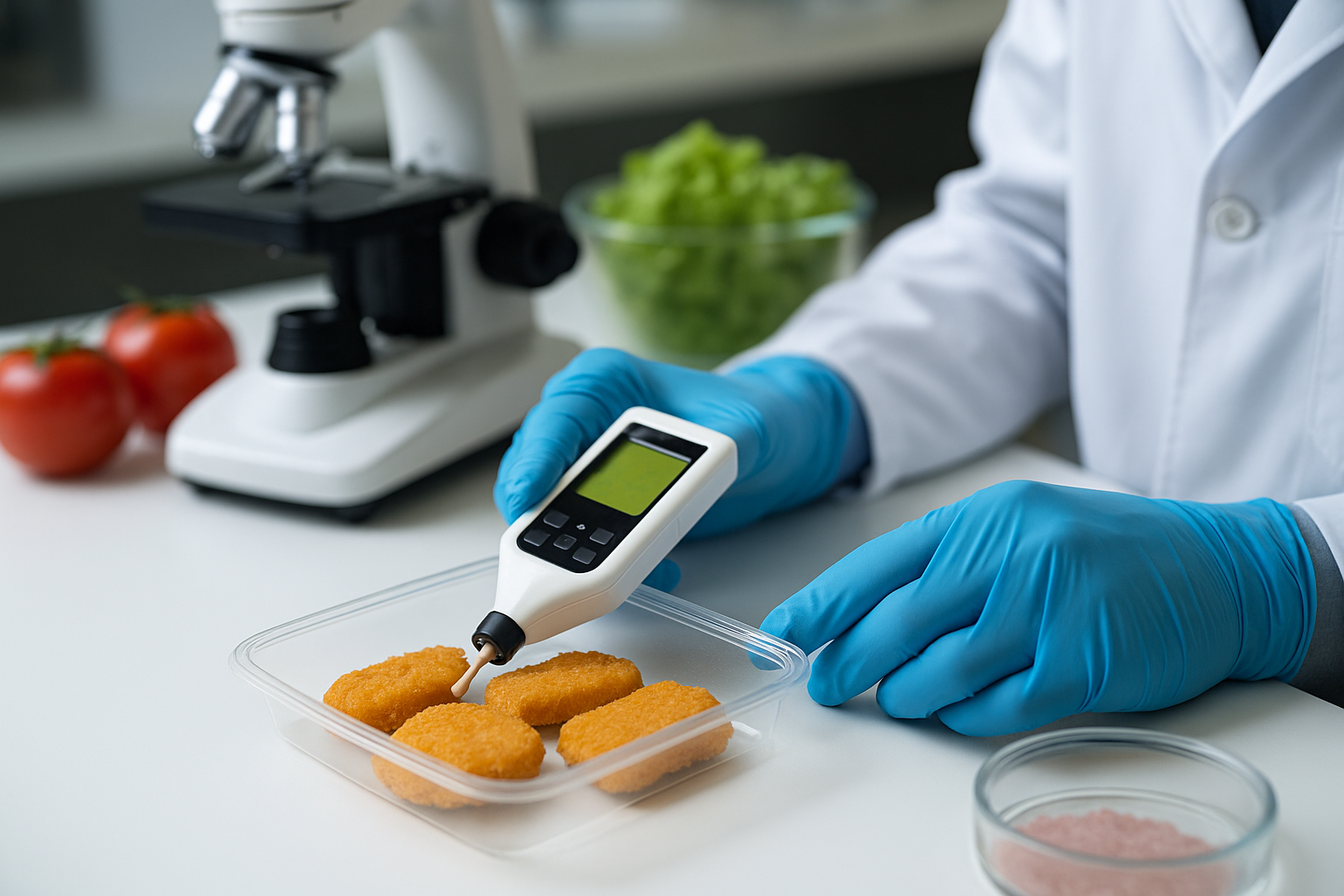Future of food safety: Advanced biosensors promise faster, greener contamination detection
The use of biorecognition elements such as antibodies, aptamers, nucleic acids, and bacteriophages significantly enhances detection accuracy. These components specifically bind to target pathogens, reducing false positives and improving reliability. The authors underscore how nanotechnology further amplifies sensor performance, as nanoparticles enhance signal strength and detection sensitivity, making it possible to identify pathogens at trace levels.

Foodborne illnesses remain a pressing global health issue, causing millions of infections and economic losses each year. Addressing this challenge requires faster, more accurate, and sustainable detection methods to safeguard the food supply chain.
In a recent review, a team of researchers examines the latest advancements in biosensing technologies. Their paper, Advancing Food Safety Surveillance: Rapid and Sensitive Biosensing Technologies for Foodborne Pathogenic Bacteria, published in Foods (2025), provides a comprehensive assessment of emerging detection strategies and their future potential for large-scale application.
How are biosensing technologies changing food safety detection?
The study highlights that conventional bacterial detection methods, such as culture-based techniques and polymerase chain reaction (PCR), while reliable, are time-consuming, labor-intensive, and require specialized laboratory facilities. These limitations prevent timely interventions during outbreaks and restrict testing capabilities in resource-limited regions.
On the other hand, biosensors, integrating biorecognition elements with signal transducers, offer a game-changing alternative. The paper reviews several classes of biosensors, including electrochemical, optical, and piezoelectric systems. Each type uses different mechanisms to identify pathogens with high sensitivity and specificity. Electrochemical biosensors, for instance, provide real-time quantitative results with minimal sample preparation, while optical biosensors, leveraging fluorescence or surface plasmon resonance, enable rapid detection at low bacterial concentrations.
The use of biorecognition elements such as antibodies, aptamers, nucleic acids, and bacteriophages significantly enhances detection accuracy. These components specifically bind to target pathogens, reducing false positives and improving reliability. The authors underscore how nanotechnology further amplifies sensor performance, as nanoparticles enhance signal strength and detection sensitivity, making it possible to identify pathogens at trace levels.
This technological evolution not only speeds up detection but also enables portable, on-site testing devices. These developments allow food producers, regulators, and distributors to monitor contamination risks more effectively across the entire supply chain.
What challenges must be overcome to ensure effective deployment?
Despite being promising, the paper identifies several obstacles that hinder their widespread adoption of biosensing technologies. Commercialization remains a significant challenge. Although some devices, such as the 3M™ Molecular Detection System, have been successfully integrated into industrial workflows, many biosensors are still in the experimental stage. Scaling production while maintaining cost-effectiveness is essential for these technologies to compete with existing methods.
Another barrier is standardization. There is currently a lack of unified regulatory frameworks for biosensor validation, making it difficult to establish trust and consistency across markets. The authors stress that standardized evaluation protocols are critical for accelerating regulatory approvals and encouraging industry adoption.
Handling complex food matrices poses technical difficulties as well. Many foods contain substances that interfere with detection signals, compromising accuracy. Future biosensors must incorporate robust sample preparation techniques or develop interference-resistant detection methods to maintain performance in real-world conditions.
Additionally, user-friendliness is a key consideration. For these devices to be widely implemented, particularly in small-scale food operations or regions with limited technical expertise, they must be simple to operate without specialized training. This includes integrating automated features and providing clear result interpretations.
How will future biosensors shape sustainable food safety?
The authors also point out that next-generation biosensors must align with environmental sustainability. They advocate for incorporating biodegradable and recyclable materials into sensor design, as well as developing reusable sensor substrates to reduce waste. Energy-efficient detection systems, including those powered by low-energy electronics, also contribute to minimizing environmental impact.
The review outlines promising research directions, including multiplex detection systems capable of identifying multiple pathogens simultaneously, thereby reducing testing time and cost. AI-driven data analysis is also expected to enhance biosensor performance, enabling real-time monitoring and predictive risk assessments. Combining biosensors with Internet of Things (IoT) networks could allow continuous food safety surveillance across large-scale production and distribution systems.
The authors call for stronger collaboration between researchers, policymakers, and industry stakeholders. By investing in biosensor development and harmonizing international regulations, countries can better prepare for emerging threats while supporting global food trade.
- FIRST PUBLISHED IN:
- Devdiscourse









